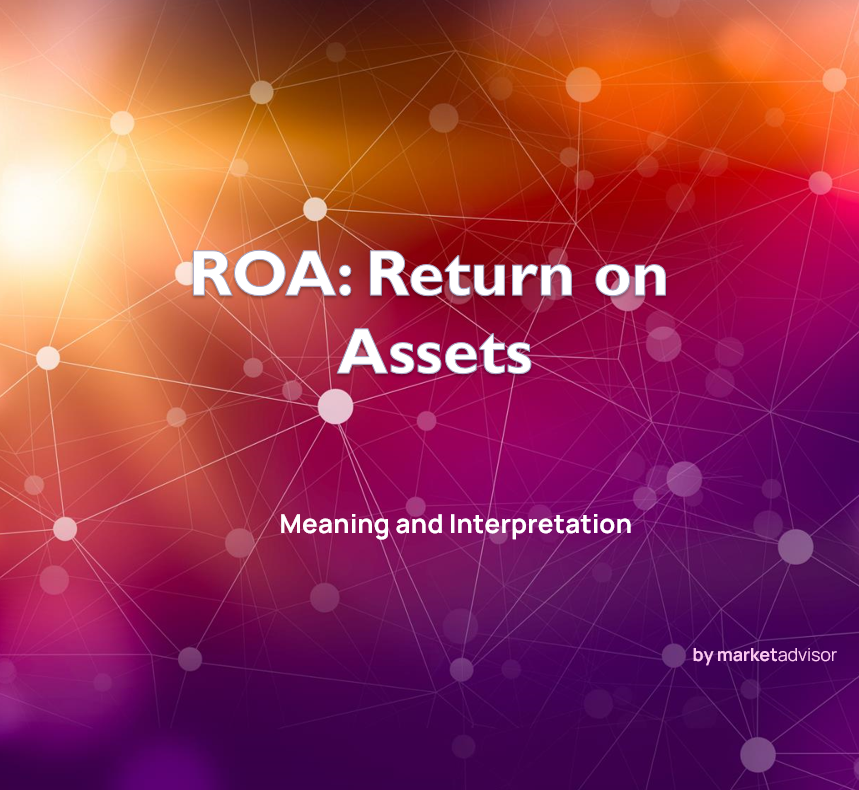Return on assets (ROA) is a financial ratio that measures how profitable a company is in comparison to its total assets. ROA can be used by corporate management, analysts, and investors to determine how efficiently a company uses its assets to generate a profit.
The metric is typically expressed as a percentage by combining a company’s net income and average assets. A higher ROA indicates that a company is more efficient and productive in managing its balance sheet to generate profits, whereas a lower ROA indicates that there is still room for improvement.
ROA, what are you talking about?
Businesses are concerned with efficiency. Profits to revenue are a useful operational metric, but comparing them to the resources used to earn them demonstrates the viability of that company’s existence. Return on assets is the most basic of such corporate value-for-money measures. It informs you of the earnings generated by invested capital or assets.
ROA for public companies can vary significantly and is highly dependent on the industry in which they operate, so the ROA for a tech company will not always correspond to that of a food and beverage company. As a result, when using ROA as a comparative measure, it is best to compare it to a company’s previous ROA numbers or the ROA of a similar company.
The ROA figure informs investors about how effective the company is at converting its investments into net income. The higher the ROA, the better, because the company can earn more money with less investment. Simply put, a higher ROA indicates greater asset efficiency.
THe ROA formula is the following:
ROA = Net Income / Total Assets
Particular Attention
Because of the balance sheet accounting equation, total assets are also the sum of total liabilities and shareholder equity. Both sorts of funding are utilized to fund a company’s activities. Because a company’s assets are either supported by debt or equity, some analysts and investors disregard the cost of acquisition by include interest expenditure in the ROA formula.
In other words, the impact of incurring more debt is mitigated by adding back the cost of borrowing to net income and utilizing the average assets in a given period as the denominator. Interest expense is included since net income on the income statement does not include interest expense.
Limits of ROA
The fact that ROA cannot be applied across industries is one of its main problems, as was already mentioned. The reason for this is because businesses in one industry have distinct asset bases than those in a different one. As a result, businesses in the oil and gas sector don’t have the same asset bases as those in the retail sector.
Additionally, some analysts believe that the basic ROA calculation is only useful for banks and has a narrow range of applications. Because assets and liabilities are carried at market value through mark-to-market accounting (or at least an approximation of market value) rather than historical cost, bank balance sheets more accurately reflect the true worth of their assets and obligations. The calculation already includes both interest expense and interest income.
Variation of the fomula
Debt and equity capital are strictly segregated for non-financial enterprises.
Therefore, by comparing returns to equity investors (net income) with assets funded by both debt and equity investors, the conventional ROA formula confuses the issue (total assets). This numerator-denominator discrepancy is fixed in two iterations of this ROA calculation by reintroducing interest expenditure (net of taxes) into the numerator. Therefore, the formulas would be:
ROA(2) = Net Income + (Interest Expense x(1-Tax rate)) / Total Assets
ROA(3) = (Operating Income x(1-Tax rate)) / Total Assets
How Do Investors Use ROA?
Because ROA demonstrates how effectively a business uses its assets to produce profits, investors can use it to identify promising stock opportunities.
A rising ROA over time shows the business is performing well at growing its profits with each dollar it spends on investments. A declining ROA suggests the corporation may have overinvested in assets that haven’t increased revenue, which is a warning the business may be in jeopardy. In order to compare businesses in the same industry or sector fairly, ROA can also be employed.
What Is a Good Return on Assets?
In general, a ROA of over 5% is regarded as good, and one of over 20% as exceptional. However, companies in the same industry should always be compared when comparing ROAs. As illustration, a software company has significantly less assets than an automobile company. The software company’s assets will be overstated as a result, and its ROA might receive a dubious boost.
